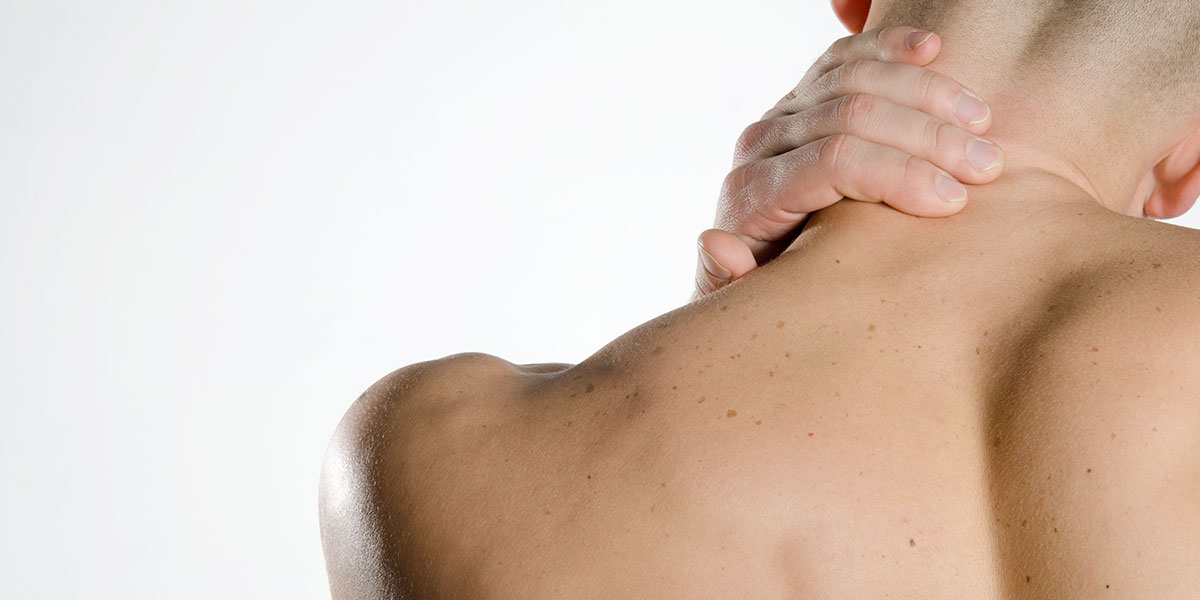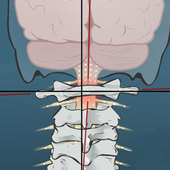
As you go about your day, you may see people massaging their neck and shoulders, or wincing as they try and turn their head. Sometimes you may even see someone forcibly pop their own neck. This popping is an attempt to ease the stress and discomfort of neck pain caused by injuries or poor posture.
Such ‘self-treatments’ for neck pain may provide short-term relief, but it can aggravate and worsen the root cause of the problem.
Upper cervical spinal misalignments can affect your entire body
Our neck acts as a support system for the most important part of our body—the brain. The average weight of an adult human head is approximately 12 lbs; this weight sits on top of our first vertebrae, the ‘atlas’. Just as in Greek mythology Atlas holds up the world, your atlas holds up your world—your head! The shape of the atlas allows for a large degree of head mobility which is necessary to perform everyday tasks. Unfortunately, this comes at a cost—vulnerability to injury due to lack of stability.
A misalignment between the head and the neck can result in altered joint and muscle function. This, in turn, can cause sensations of pain, burning, numbness, increased tension, and intense pressure. Regularly experiencing a sore neck, stiff neck, or sharp neck pain are common signs of a misaligned upper cervical spine. Neck pain treatment should be sought out immediately to avoid any progression of the condition.
What can cause neck pain?
Neck pain can be a sign that there is an imbalance between the head and the neck which can irritate the joints, ligaments, and surrounding muscles and be caused by a variety of different physical traumas. Some are immediate, and some can happen over time:
- Direct injuries to the head or neck, such as a fall or bump
- Whiplash injuries
- Car or sports accidents
- Poor posture
- Sleeping in improper positions
Since the causes are so varied, pain may be felt immediately, or it may not be felt for days, weeks, months or even years after the initial injury. If an assessment of the neck isn’t performed to unveil and treat the misalignment, the injury could progress. Neck pain is often a precursor to other symptoms such as migraines, headaches, dizziness, TMJ dysfunction, facial pain, and/or numbness.
A sore or stiff neck can seem like a minor problem, but if ignored it can have a large impact on your quality of life. If you regularly experience the effects of a neck injury, you could benefit immensely from seeking neck pain treatment and getting your spine checked by a NUCCA chiropractor.
Start your neck pain relief journey with NUCCA
At The Vital Posture™ Clinic, we focus specifically on correcting upper cervical spinal misalignments through a chiropractic technique called NUCCA. Our NUCCA doctors seek to realign the head and neck which helps reduce neck pain, stress, and any associated discomfort you may be experiencing.
Many people don’t seek treatment for their neck pain because they believe it’s simply a normal part of life. We often see patients who’ve spent large sums of money on products or medication for their neck pain, most of which only provide temporary relief. An opinion from a NUCCA doctor will provide answers on how or if the relationship between your head and neck may be contributing to how you feel. Every second you spend with neck pain is a second you are not living as your best, healthiest self.
Recent studies have shown that NUCCA adjustments are an effective means of treatment for neck pain without any major adverse reactions.
The process itself is gentle and underwhelming. It feels like no more than a slight pressure behind the ear, comparable to having your pulse taken. The aim is to restore your proper joint mechanics and return your body to a more balanced state.
Be proactive with your health and have your neck assessed by our team of NUCCA chiropractors.
If you have additional questions about what to expect at a NUCCA appointment for neck pain relief, send us a message or learn more here.
References:
Hoy, D. et al. The global burden of neck pain: estimates from the Global Burden of Disease 2010 study. Annals of the Rheumatic Diseases. 2013; 73(7) doi.org/10.1136/annrheumdis-2013-204431.
Jackson, R. The Classic: The Cervical Syndrome. Clin Orthop Relat Res. 2010 Jul; 468(7): 1739–1745.
Rochester, R.P. Neck pain and disability outcomes following chiropractic upper cervical care: a retrospective case series. J Can Chiropr Assoc. 2009 Aug; 53(3): 173–185.


